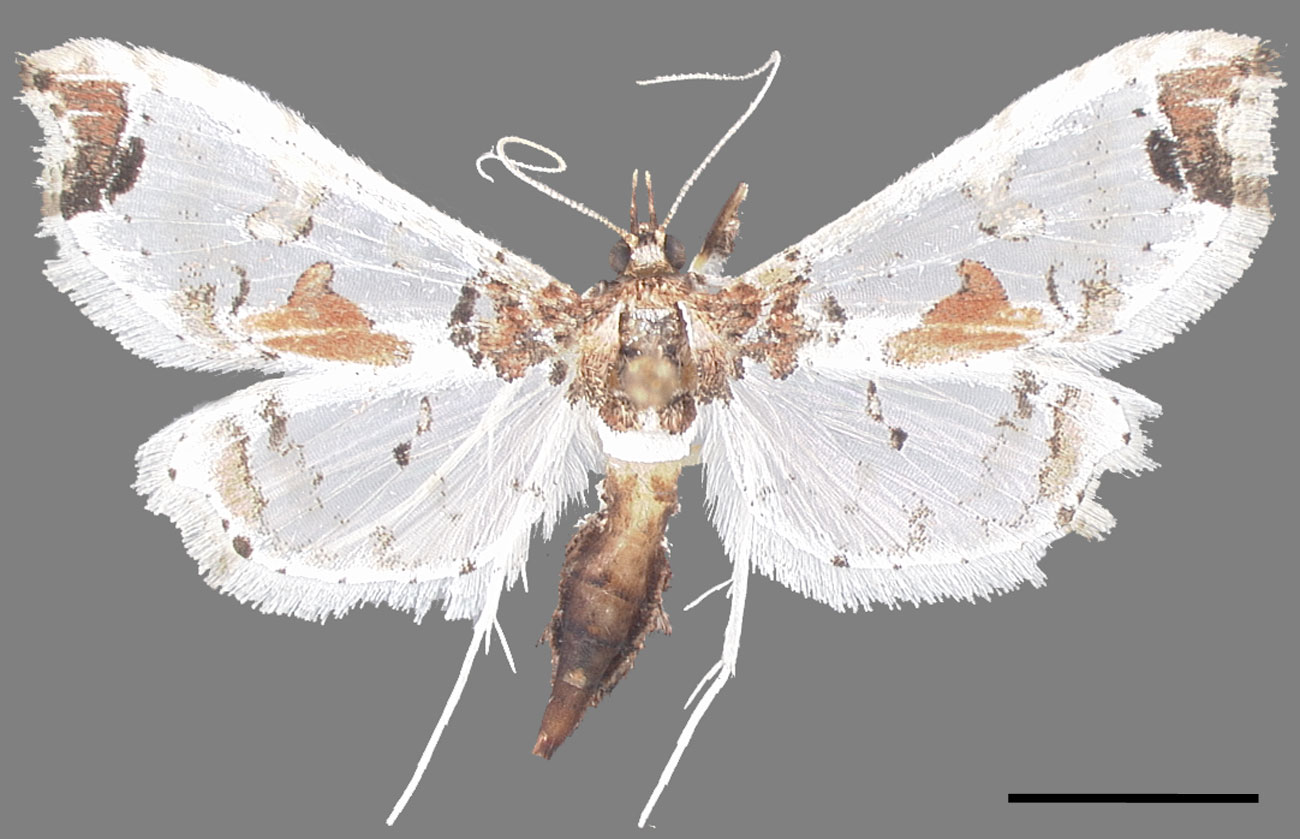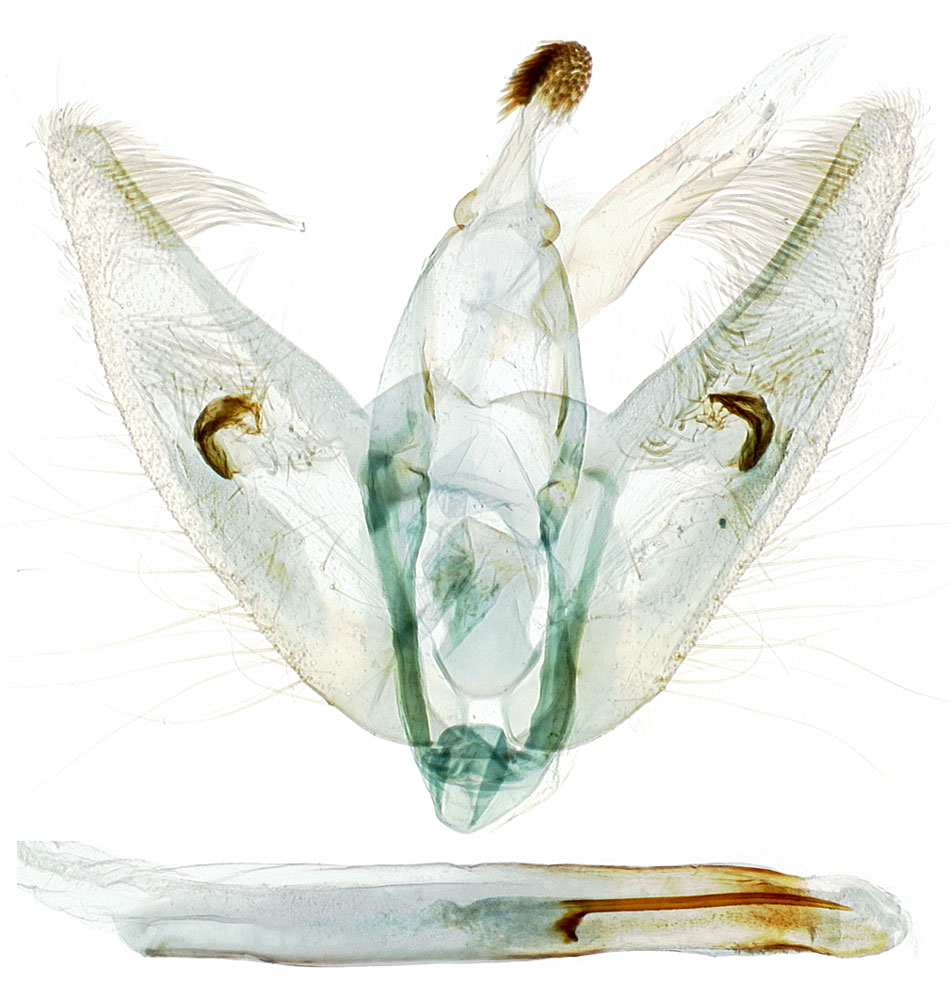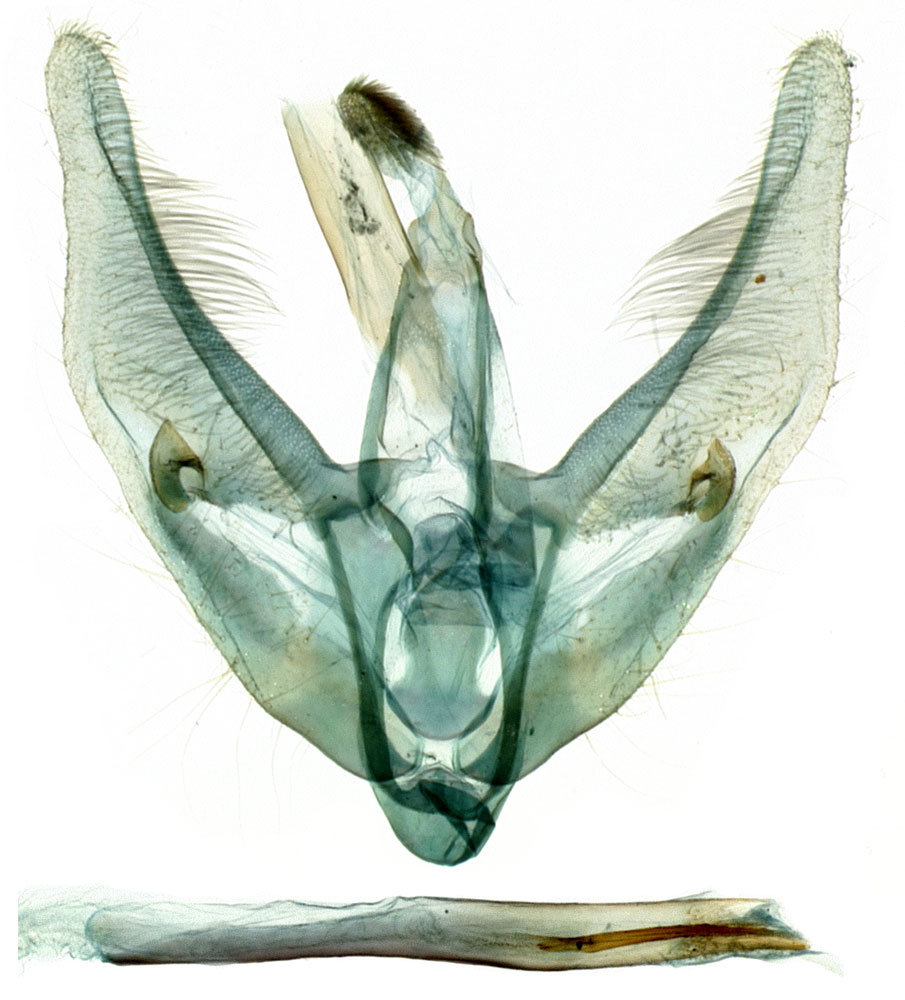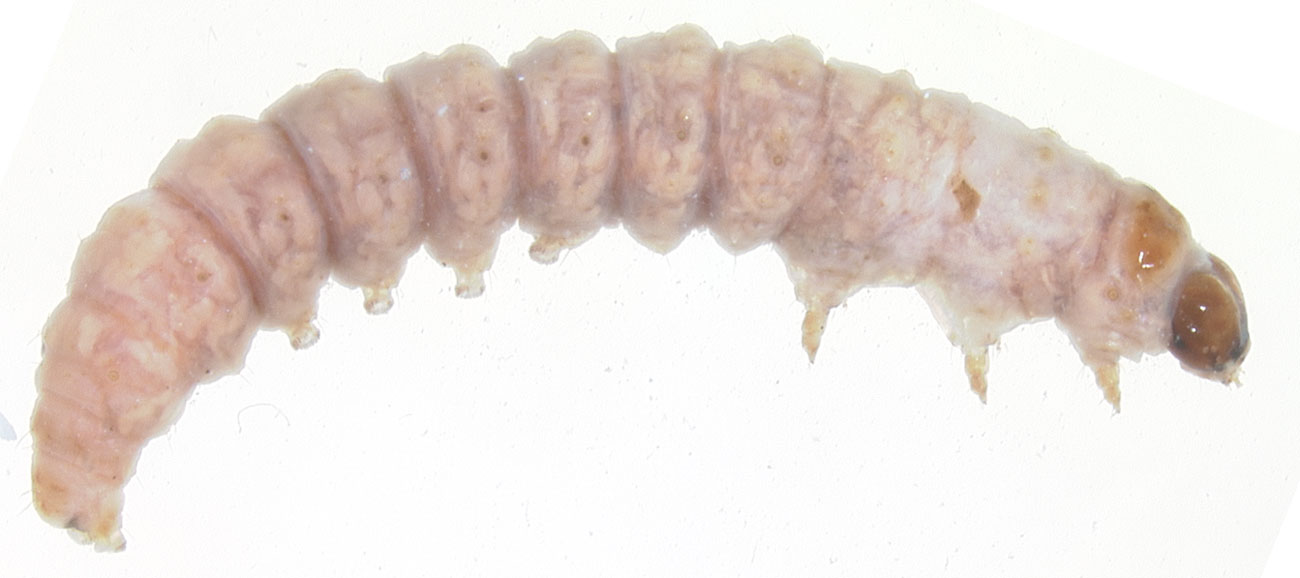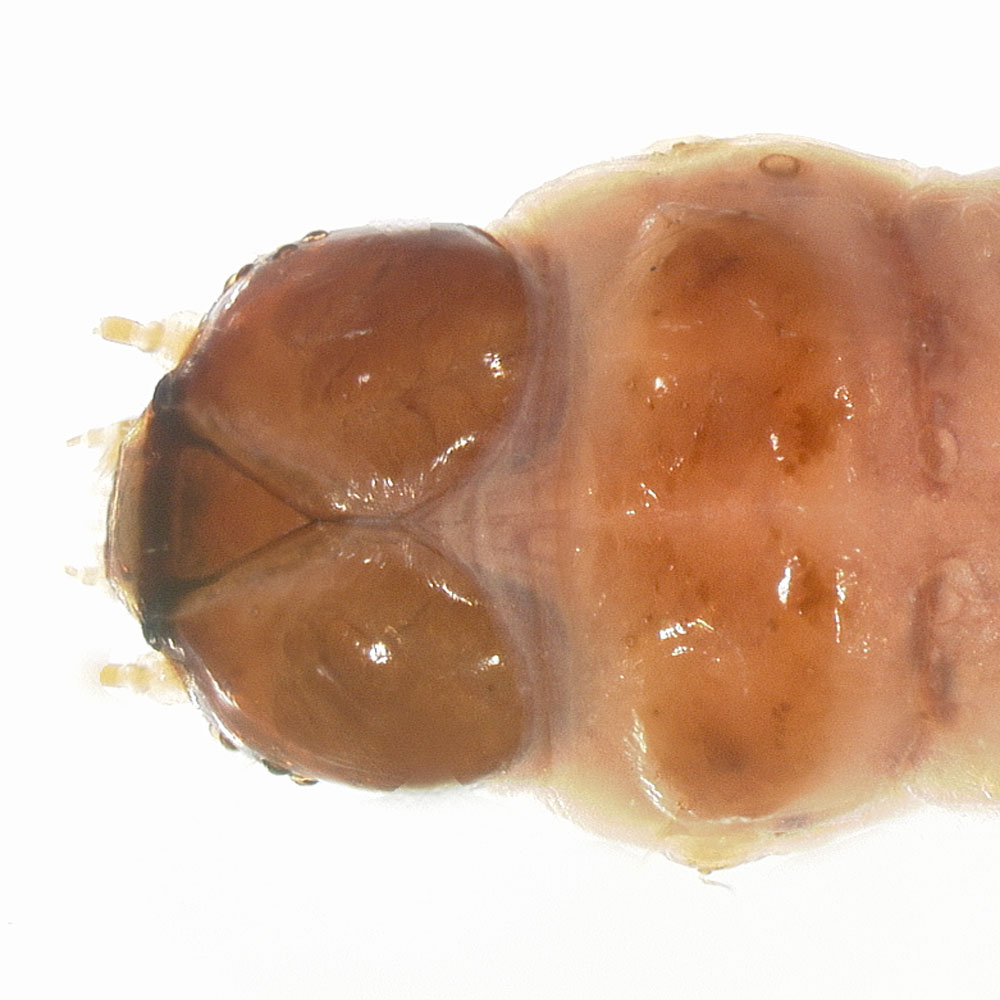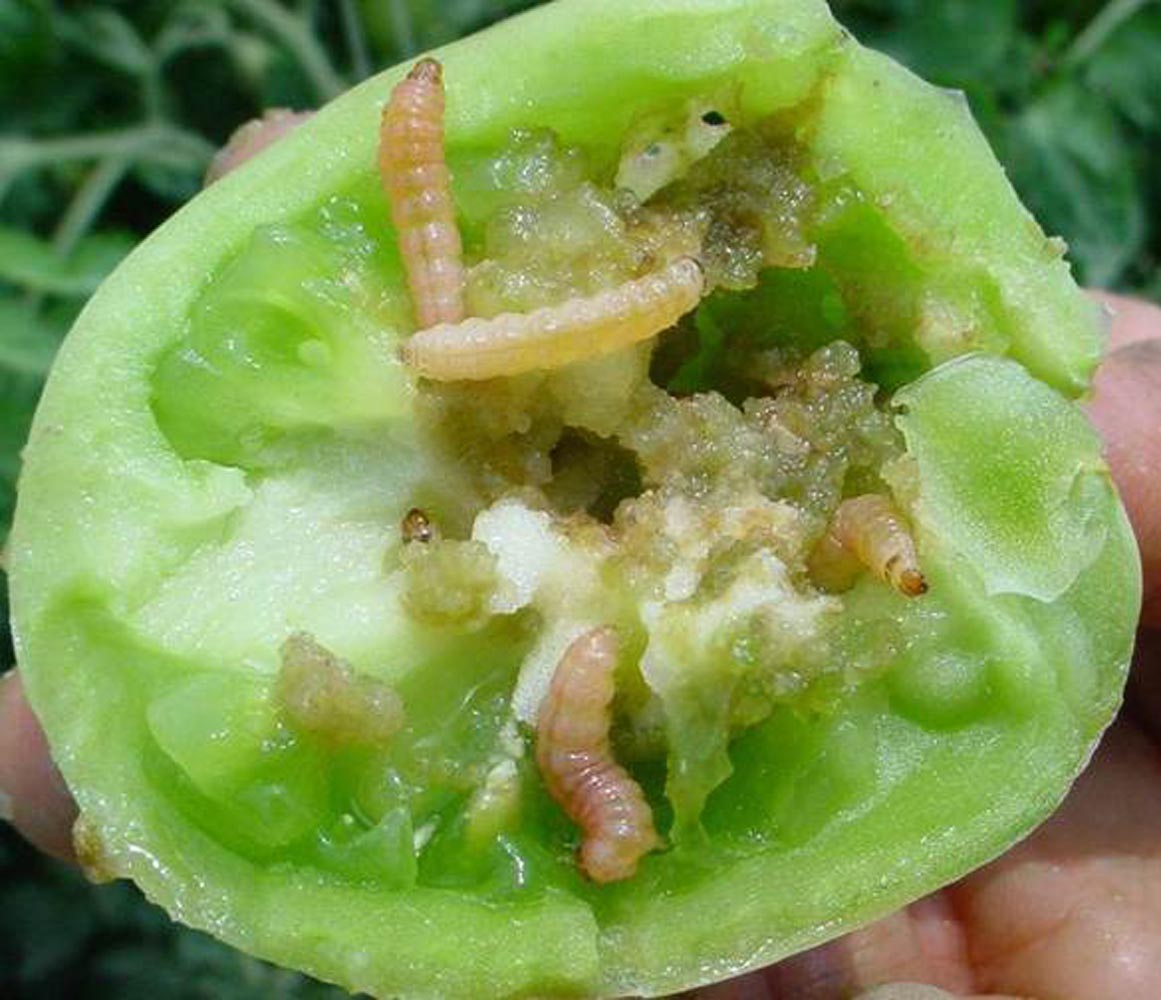Neoleucinodes elegantalis
|
Neoleucinodes elegantalis male habitus. Scale = 5 mm. |
|
Neoleucinodes elegantalis female habitus. Scale = 5 mm. |
|
Neoleucinodes elegantalis head, male. |
|
Neoleucinodes elegantalis head, female. |
|
Neoleucinodes elegantalis male genitalia (Costa Rica). |
|
Neoleucinodes elegantalis male genitalia (Brazil). |
|
Neoleucinodes elegantalis female genitalia. |
|
Neoleucinodes elegantalis larva. |
|
Neoleucinodes elegantalis larva, head and prothorax. |
|
Neoleucinodes elegantalis larvae in tomato fruit. © Ana Elizabeth Diaz Montilla, Corpoica La Selva (Colombia). |
|
Neoleucinodes elegantalis pupation in folded leaf. © Ana Elizabeth Diaz Montilla, Corpoica La Selva (Colombia). |
Name
Neoleucinodes elegantalis (Guenée, 1854)
Common name: Tomato fruit borer
Original combination: Leucinodes elegantalis Guenée, 1854
Synonyms: none.
Alternative combinations: none.
Classification: Pyraloidea, Crambidae, Spilomelinae, Leucinodes group
Adult recognition
Forewing length: 8.0–13.0 mm, broad. The fronsFrons:
The front of the head, between the eyes.
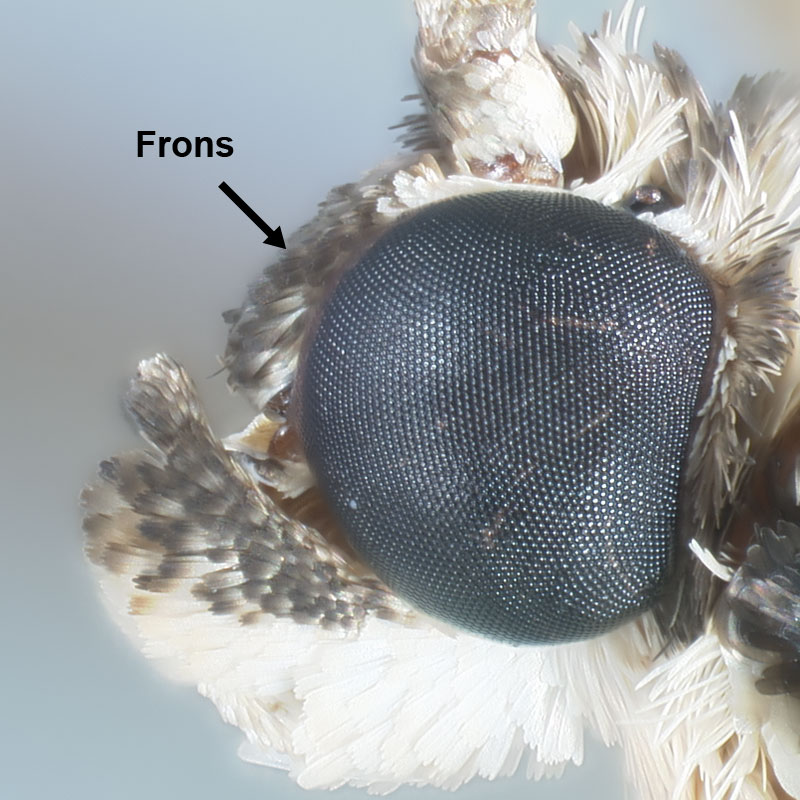 is rounded, not swollen and without projections. The labial palpi are sexually dimorphic: males have a short apical segment, whereas females have the apical segment nearly as long as the middle one. The male genitalia have narrow, triangular valvae. The fibulaFibula:
is rounded, not swollen and without projections. The labial palpi are sexually dimorphic: males have a short apical segment, whereas females have the apical segment nearly as long as the middle one. The male genitalia have narrow, triangular valvae. The fibulaFibula:
Any projection on the face of the valva (not including the saccular process, if any).
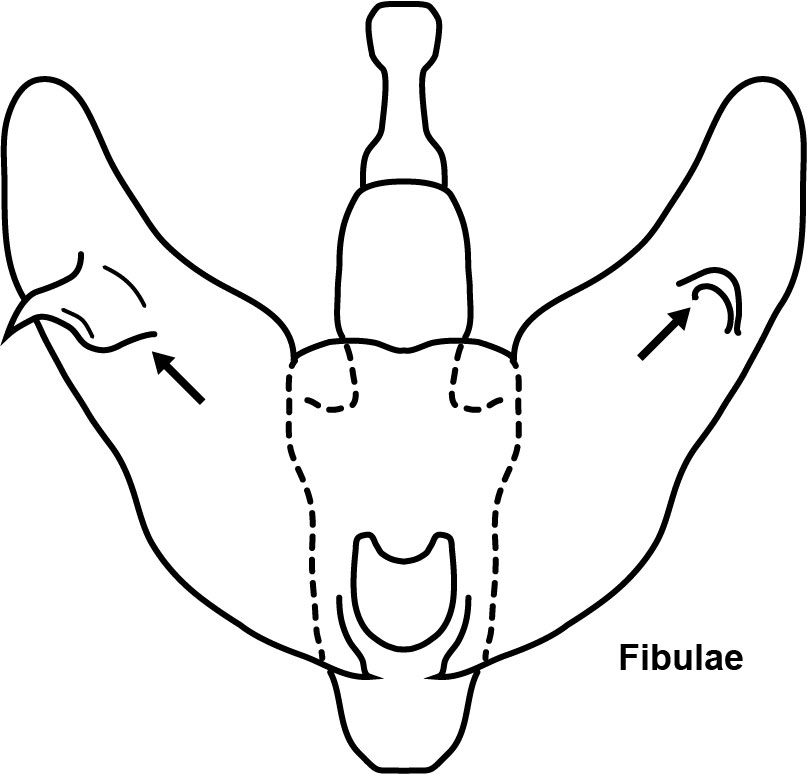 is scoop-shaped with a rather hollow base and is closer to the base than to the apex of the valvaValva:
is scoop-shaped with a rather hollow base and is closer to the base than to the apex of the valvaValva:
One of the pair of large lateral appendages of the male genitalia (pl. valvae).
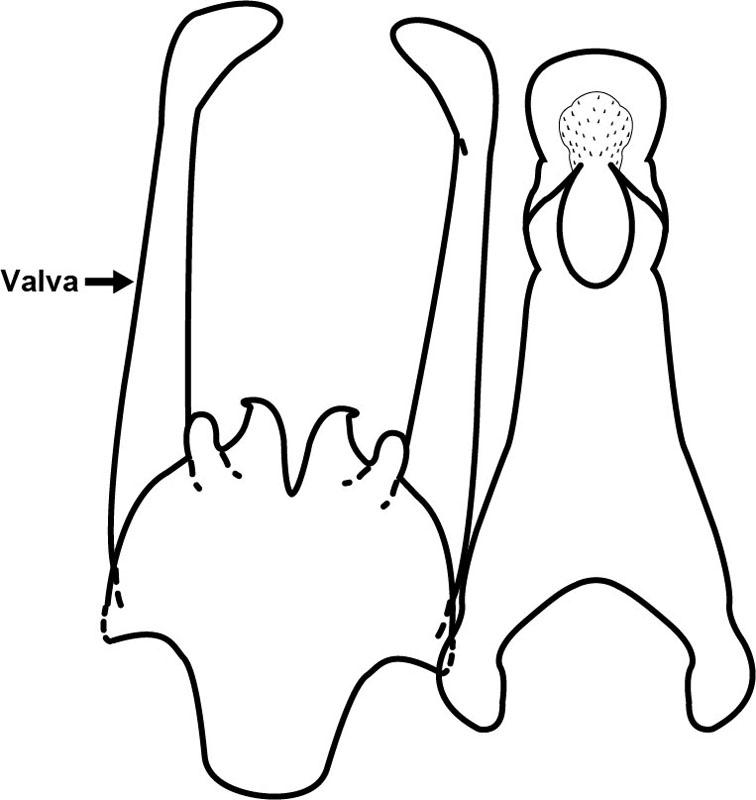 . The cornutusCornutus:
. The cornutusCornutus:
A usually spine-like sclerite visible within the phallus.
 is long and straight. The female genitalia have moderately elongate apophyses and a sclerotized, cup-shaped ostium without noticeable sclerotization. The antrumAntrum:
is long and straight. The female genitalia have moderately elongate apophyses and a sclerotized, cup-shaped ostium without noticeable sclerotization. The antrumAntrum:
Posterior section of the ductus bursae, posterior of the colliculum.
 has only a narrow thickening.
has only a narrow thickening.
Immature stages
Larvae are white to pale pink and grow to 2 cm. The pinacula are generally not pigmented, although the dorsal pinacula of the thorax may be pale brown. The prothoracic shieldProthoracic shield:
Also called the T1 shield. In the larva, the extensive sclerotized area of the dorsal half of the prothorax. It bears six setae on each side, and its color pattern is often diagnostic.
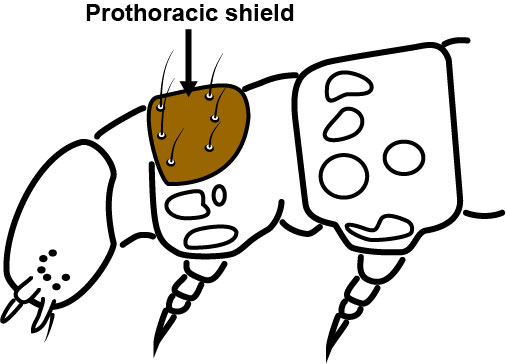 is yellow-brown and lacks distinctive markings. The D1 pinacula do not have distinct spots anterior of the setae. The A1 SV group usually has one setaSeta:
is yellow-brown and lacks distinctive markings. The D1 pinacula do not have distinct spots anterior of the setae. The A1 SV group usually has one setaSeta:
A larval hair (pl. setae).
but rarely has two. The SD1 setaSeta:
A larval hair (pl. setae).
on A8 is anterior or anterodorsal of the spiracleSpiracle:
Respiratory openings, mainly of interest for larval chaetotaxy. One pair on most segments.
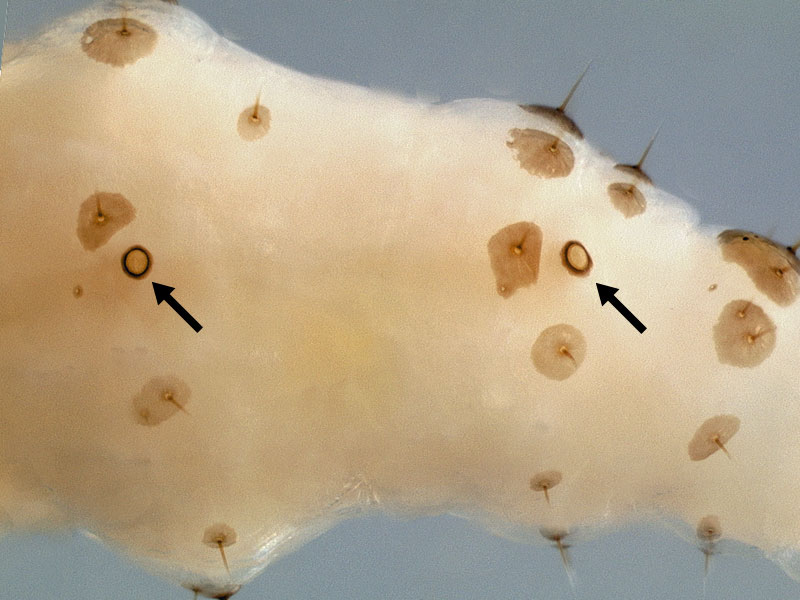 .
.
Similar species
Neoleucinodes silvaniae Díaz and Solis, 2007 is a similar cryptic species known from Colombia. It is slightly smaller and feeds on Solanum lanceifolium Jacq. Females have short labial palpi like those of males, with a short apical meron, and short ovipositorOvipositor:
The terminal segments VIII and IX in the female genitalia.
 apophyses; the male valvae have smaller, flatter fibulae and a short cornutusCornutus:
apophyses; the male valvae have smaller, flatter fibulae and a short cornutusCornutus:
A usually spine-like sclerite visible within the phallus.
 ; and the larvae have distinctly pigmented pinacula on the second thoracic segment; further differences are cited in Diaz and Solis (2007). Neoleucinodes prophetica also has shorter labial palpi. The male genitalia have the fibulaFibula:
; and the larvae have distinctly pigmented pinacula on the second thoracic segment; further differences are cited in Diaz and Solis (2007). Neoleucinodes prophetica also has shorter labial palpi. The male genitalia have the fibulaFibula:
Any projection on the face of the valva (not including the saccular process, if any).
 in the distal half of the valvaValva:
in the distal half of the valvaValva:
One of the pair of large lateral appendages of the male genitalia (pl. valvae).
 (beyond halfway). The female genitalia have a thickened antrumAntrum:
(beyond halfway). The female genitalia have a thickened antrumAntrum:
Posterior section of the ductus bursae, posterior of the colliculum.
 and an ostium bursaeOstium bursae:
and an ostium bursaeOstium bursae:
Entrance of the bursa copulatrix, leading into the antrum and then to the ductus bursae.
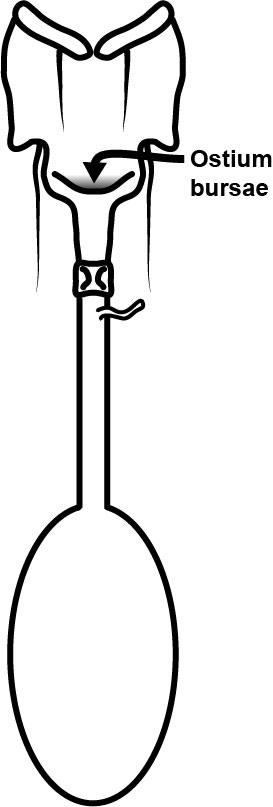 with a narrowly sclerotized lip.
with a narrowly sclerotized lip.
Behavior
Larvae bore in fruit. Females lay eggs preferentially on the underside of the calyx of fruits 1–3 cm in diameter, only rarely on leaves. Eggs hatch in 5–7 days, and the larval stage lasts 15–19 days, undergoing normally 5 instars. Larvae bore into fruit within one or two hours, leaving a 0.5 mm pinhole. They consume seeds and fruit flesh. One to three larvae per fruit is the norm, but up to 18 is possible. Larvae exit the fruit and, after a pre-pupal stage of 1–2 days, pupate in a rolled leaf edge or among plant debris on the ground. Pupation lasts about 11 days. Adults are nocturnal and live about one week. There are multiple generations per year. The male pheromone is widely used for monitoring.
Distribution
The species does not occur in North America, but it is reported as far north as the Greater Antilles. It is broadly distributed in Central and South America, including: Argentina, Brazil, Colombia, CostaCosta:
(1) The anterior margin of the wing.
(2) In the male genitalia, the dorsal margin of the valva.
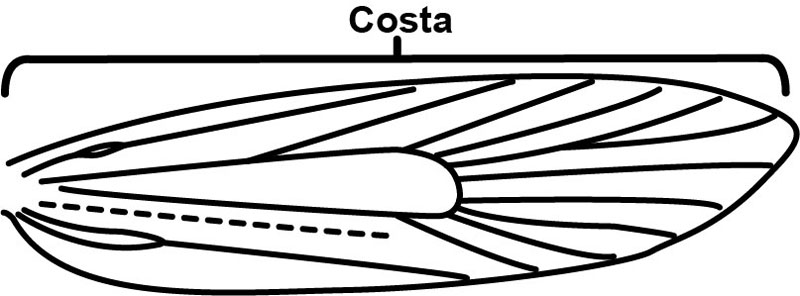 Rica, Cuba, Ecuador, El Salvador, French Guiana, Grenada, Guatemala, Guyana, Honduras, Jamaica, Mexico, Panama, Paraguay, Peru, Puerto Rico, Suriname, Trinidad and Tobago, Uruguay, and Venezuela.
Rica, Cuba, Ecuador, El Salvador, French Guiana, Grenada, Guatemala, Guyana, Honduras, Jamaica, Mexico, Panama, Paraguay, Peru, Puerto Rico, Suriname, Trinidad and Tobago, Uruguay, and Venezuela.
Hosts
Capsicum annuum L. (pepper)
Cyphomandra betacea (Cav.) Sendtn. (tree tomato)
Solanum lycopersicum L. (tomato)
S. acerifolium Dunal
S. aethiopicum L. (scarlet eggplant)
S. atropurpureum Schrank
S. capsicoides All. (cockroach berry)
S. crinitum Lam.
S. hirtum Vahl.
S. melongena L. (eggplant)
“S. ovigerum” (ornamental white eggplant)
S. palinacanthum Dunal
S. pseudolulo
S. quitoense Lam. (naranjilla)
“S. racemiflorum”
S. sessiliflorum Dunal (cocona)
S. sisymbriifolium Lam. (sticky nightshade)
S. torvum Sw.
S. sect. torvum
S. viarum Dunal
Comments
Neoleucinodes elegantalis has been intercepted in Europe along with imports of Solanum melongena from Surinam and the Dominican Republic.
Díaz-Montilla, Suárez-Baron, et al. (2013) found population genetic differences and segregation of COI haplotypes among different areas and host plants in Colombia.
Literature
Capps 1948Capps 1948:
Capps HW. 1948. Status of the pyraustid moths of the genus Leucinodes in the New World, with descriptions of new genera and species. Proceedings of the United Sates National Museum 98: 69-83, pl. 5-10.
Díaz and Solis 2007Díaz and Solis 2007:
Diacute;az AE and Solis MA. 2007. A new species and species distribution records of Neoleucinodes (Lepidoptera: Crambidae: Spilomelinae) from Colombia feeding on Solanum sp. Proceedings of the Entomological Society of Washington 109: 897-908.
Díaz-Montilla et al. 2013Díaz-Montilla et al. 2013:
Díaz-Montilla AE, Solis MA, and Kondo T. 2013. The Tomato fruit borer, Neoleucinodes elegantalis (Guenée) (Lepidoptera: Crambidae), an insect pest of Neotropical solanaceous fruits. Ch. 8 (pp. 137–159) in Peña JE (ed.). Potential Invasive Pests of Agricultural Crops. CABI Publishing, Wallingford, Great Britain. 496 pp.
Díaz-Montilla et al. 2013aDíaz-Montilla et al. 2013a:
Diacute;az-Montilla AE, Suaacute;rez-Baron HG, Gallego-Saacute;nchez G, Saldamando-Benjumea CI, and Tohme J. 2013. Geographic differentiation of Neoleucinodes elegantalis (Lepidoptera: Crambidae) haplotypes: evidence for Solanaceae host plant association and Holdridge life zones for genetic differentiation. Annals of the Entomological Society of America 106: 586-597.
Eiras and Blackmer 2003Eiras and Blackmer 2003:
Eiras AE and Blackmer JL. 2003. Eclosion time and larval behavior of the tomato fruit borer, Neoleucinodes elegantalis (Gueneacute;e) (Lepidoptera: Crambidae). Scientia Agricola 60: 195-197.
Molet 2013Molet 2013:
Molet T. 2013. CPHST [Pest Datasheet] Neoleucinodes elegantalis . USDA APHIS PPQ CPHST. 1-9. http://caps.ceris.purdue.edu/webfm_send/1853 .
Passoa 1985Passoa 1985:
Passoa SC. 1985. Taxonomy of the larvae and pupae of economically important Pyralid[a]e in Honduras. Unpublished Masterrsquo;s Thesis, University of Florida, [Gainesville].
Teles Pontes et al. 2010Teles Pontes et al. 2010:
Teles Pontes WJ, Lima ER, Cunha EG, Teixeira de Andrade PM, Locirc;bo AP, and Barros R. 2010. Physical and chemical cues affect oviposition by Neoleucinodes elegantalis . Physiological Entomology 35: 134-139.
Photo credits
Figs. 10 and 11: © Ana Elizabeth Diaz Montilla, Corpoica La Selva (Colombia).


